#part perceptual fascination
Text
old franchise fan wisdom: the sexism is always darkest b4 the dawn [or it might remain dark forever. maybe. sorry.]
#some shit#if u know what blog to look for someone else it making the indepth post#on the current show. cause its. bleh.#BUT ANYWAY#I. am just fascinated by the phenomina#i would love to know. if its. like perceptual. being more forgiving of the sexism in an older show than a newer one#recency bias? the sexism of a show your current experiencing is worse than one you have previously experienced?#experiencial? sexism of the curent cultural mode to is worse to see than the one ones the the past#maybe just? quanity? as urge to increase the presence of woman drives on it also leads to. way more of it?#than a simple bit part would??#it is. a mystery. but no seriously what the FUCK is up with the 2010s#across many franchises i think id prefer a female character from the 90s than the 2010s.
1 note
·
View note
Text
I guess brainrot over the idea of an ineffable husbands style tensimm kiss won't let me sleep so.
I think, leaving aside the general collective unconscious and David Tennant in a telepathic mode of transport, the main reason the dynamic hit as so similar is this kind of. Absolute versus relational morality? I mean, this is what's on the deepest level, because the most apparent aspect is the idea that one of these semi immortal entities believes the other can be kind of restored to the state of goodness? And not just this person specifically, I think Aziraphale in general and the Doctor mainly as Twelve tbh just have this worldview where good is somehow definite and in a way natural for the universe? Oh yes, Twelve will be making speeches about whether he's a good man but the very asking of such a question implies "good man" is something definite, something that one can be. And oh yes there may be villains and monsters but you know if we all just sat down and talked then sure everything could be figured out. And this is more obvious than ever in his attitude towards Missy, where y'know. She just never heard the music. Whatever that metaphor means. Just as Aziraphale assumes Crowley can just be restored to the angelic status, because sure it was just a misunderstanding right he means he's not actually evil right? In a sense, pre-time angelicness and childhood are parallel in that they both assume a mind that hasn't developed individuality yet and I guess this is why Moffat is obsessed with throwing children at the audience 24/7.
And I find it fascinating that where everyone sees Aziraphale is wrong (or, indeed just needs to figure out Heaven is evil), Twelve's clockwork orange vault is generally hailed as reaching out to the truth behind the Master that Missy got closer to than any regeneration we've seen. For some reason, because sure as hell not because of anything that happened in EOT. And that's writing for you: if it's intelligent enough you'll look at something fundamentally similar and see completely different things.
Now, Crowley and the Master have more relational relational ethics - and relational is not the same as relative. And sure as hell don't think the universe or any individual will "naturally" veer towards good. In fact, they're both pretty cynical about, at least human, nature. Difference is Crowley needs to get drunk from Spanish inquisition, while the Master thoroughly enjoys letting future humans go murder their ancestors for fun. I mean, Missy even calls the Doctor out for his absolute and sentimental idea of good, except that's framed as her being in the wrong. And then there's the whole "Paradise. You've destroyed paradise! - They were lazy. I made them hungry" exchange between War and Saxon Masters in Masterful. Serpent in Eden, anyone?
And I think that this is why tensimm give off those vibes that they were closer to understanding each other than ever before. Obviously, the moral divide is still there, as it has to be, but I think Ten, especially in EOT, is more aware of how easily one can slip into a vengeful god, and all this to SAVE someone, than ever before. So while the moral divide is arguably widest it's ever been, the perceptual differences between the Doctor and the Master are almost gone in those episodes. And I suppose the metaphor of the Doctor hearing the drums is pretty pertinent here.
Now, before there's any accusation of moral nihilism on my part - no, there isn't. I specifically wrote of moral relationality not relativism. An action or attitude can be good or evil, the thing is that every individual exists in a net of their relations to others that they can't get out of through spontaneous epiphany. And at the same time the idea of absolute good is necessary, precisely because the general momentum is towards... the opposite. At the same time, there is nothing vile that hasn't been done in the name of higher good. Again, dialectics.
Which is why I say the Master (the Simm!Master, reduced as he was) fell where he stood no less that the Doctor in season 10. Like, this absolutely wasn't the intended point and I still say the mutual suicide was peak contrivance, but. work's intent. And all of this goes back to platonists vs. sophists, you know.
So anyway, it's still Ten that desperately grabs Saxon's lapels and kisses him in hopes of making him stay where they can be happy together.
#am i making any sense#prolly nit it's one of those cases where my brain won't shut up until i let it scream#anyway#doctor who meta#good omens meta#doctor who x good omens#the doctor#tenth doctor#twelth doctor#the master#simm!master#gomez!master#thoschei#ineffable husbands#philosophy in doctor who
40 notes
·
View notes
Note
(about the dream bbq post) aren’t daturas like… the worst hallucinogen known to man? Known to give people horrifying trips with effects that linger for months/years? I wonder if that’s significant. I saw someone else point out the fork frog guy looks like a mad cow disease prion, + the spirals in the ballerina scene and the paper streamers also resemble prions. Both these things feel similarly related to losing one’s mind.
Ayo, you’re onto something!!!
This is an ask I recieved relating to my first ENA: Dream BBQ analysis I posted! Be sure to check that out if you haven’t already! I definitely plan to write more up ;p
Let’s look into what Mabel (I shall call this user such based on the first part of their username) brought up~!
Make Me Delirious
Daturas are a hallucinogen, more specifically a deliriant. Here are summaries about deliriants and delirium I found from Wikipedia
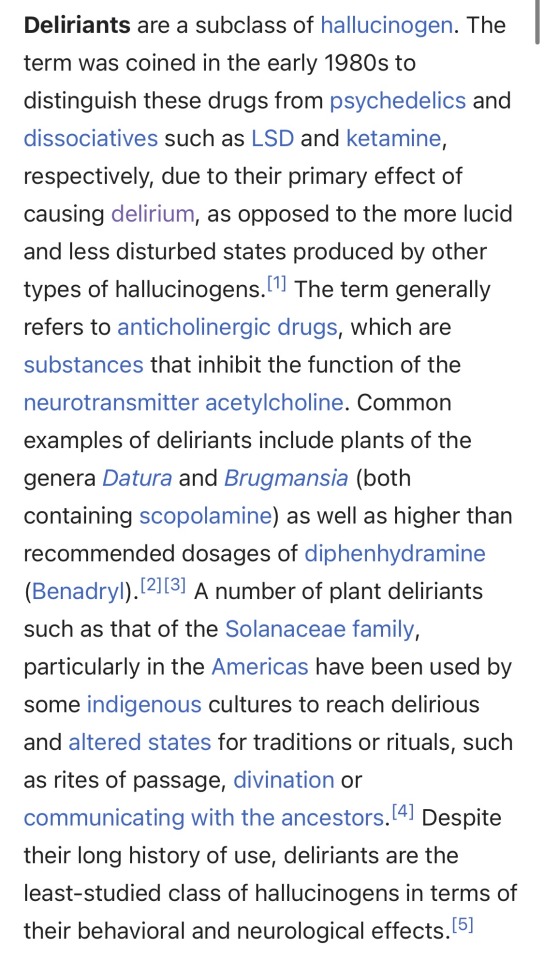

Already, we can see some fascinating points being brought up.
Deliriants inhibit the neurotransmitter acetylcholine, which is a key part of the autonomic nervous system (aka, how our body and brain react to our surroundings). It’s an internal transmitter in the sympathetic nervous system (which is responsible for the fight-or-flight response), and the primary neurotransmitter/final product of the parasympathetic nervous system (which helps you calm down and bring your body back to normal). It’s primary function is activating muscles… so shutting that down is pretty dangerous (especially in high doses).
Deliriants are known for causing… delirium (what a shocker lol). Delirium causes psychomotor changes (hyperactivity/hypoactivity/mixed), emotional and perceptual disturbances (such as hallucinations and delusions), and disrupt sleep-wake cycles.
Most plant deliriants are part of the Solanaceae/Nightshade family, which include plants such ad belladonna/deadly nightshade, and brugsmania/angel’s trumpets. Arguably, the flowers in the trailer also look like brugsmania… but whether they’re brugsmania or datura, they’re both deliriant flowers, so all of this still applies.



These plants have historically been used by indigenous cultures in the Americas (likely in extremely small doses) for assistance in traditions/rituals involving altered states. Such rituals involve communicating with ancestors, divination, and rites of passage, and are always used under supervision of a Shaman.
Prion for Info
First and foremost, what the heck is a prion?
In case you haven’t taken biology yet, or forgotten those lessons from high school, the brain has a lot of normal cell proteins called prion proteins. They're an important part of our brain function... though we're still figuring out their specific purpose. Normal prion proteins look like this (pictures are from this video):

However, there are also misfolded, abnormal prions that look like this:
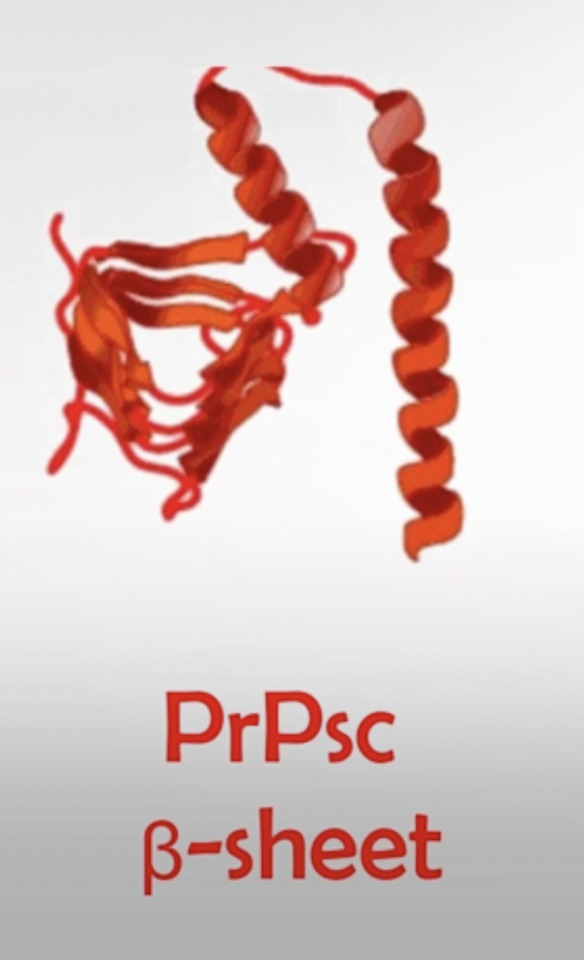
These are usually referred to simply as "prions" (we specify the normal, healthy ones as prion proteins), and they're able to spread their abnormal/misfolded structure onto the normal variants of the prion protein. This chain reaction is a major causative of neurodegenerative disorders, primarily via spongificatioxn of the brain (destroying the brain's gray matter). This can lead to severe symptoms such as rapid dementia, ataxia (loss of limb control), and insomnia. Once the disease starts, it's incredibly rapid and always fatal.


One of these neurodegenerative disorders that is especially prominent is Bovine Spongiform Encephalopathy, also known as BSE or Mad Cow disease. As the names suggest, this disease primarily harms cattle... but humans are able to become infected by it.
How? By consuming contaminated beef.
What do you usually eat at a barbecue?
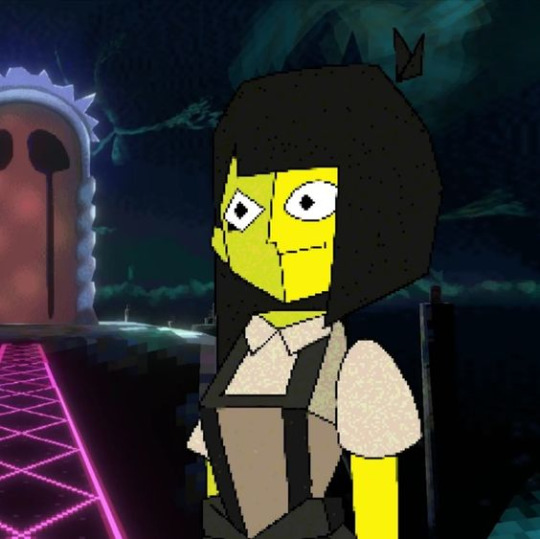
"Where is my mind" by the Pixies at full blast
In all seriousness, all of these connections to literally losing your mind and dying from madness are all very concerning. BBQ!ENA is going to go through so much more (as if the two other forms of her didn't allude to that already), and I'm very worried about her.
#ENA#ena joel g#ENA: Dream BBQ#Dream BBQ Spoilers#I'm definitely planning to do another post about the new voice reveals as well#stay tuned for that!!
12 notes
·
View notes
Text
The umbilical vein is a fascinating structure. After birth, the remnant forms a ligament of the liver, as well as paraumbilical veins with partial occlusion. Your body can make use of this structure during certain conditions—namely liver cirrhosis and portal hypertension. Your paraumbilical veins recanalize and act as a portosystemic shunt, pulling your blood from your guts to your heart in lieu of your struggling portal vein.
Have you heard of angiogenesis? New vessels can sprout from existing vessels, which can fuse back into each other and form new networks. Growth factors lead them to tissues that are starved of oxygen, and macrophages act as shepherds guiding their tips together. Your body is geared to create, to map, to seek out where you most need help, all throughout your life.
When you scream (or plan to generate any vocalization), your body protects itself. The tensor tympani muscle contracts when your brain plans to vocalize, tightening up your ear drums. This extends to most systems in your body; research shows your body keeps duplicates of movement-producing neural signals called efference copies. Efference copies exist to help predict (and suppress) the sensory consequences of willed movements. It's why you can't feel yourself the same as you feel others, can't hear yourself the same as you hear other things, why the world doesn't spin when your eyes move. It's also thought to influence your inner speech (one study suggests that internal speech alone can elicit an efference copy, thus causing sensory attenuation of audible sounds).
Your extremities prune because your blood vessels are instructed to shrink by your autonomic nervous system, not because they are absorbing water. They change so you might have a better grip on wet surfaces. So you might better interact with the world.
Your eyes perceive light where there is none via phosphenes. Phosphenes can be induced by mechanical, electrical, or magnetic stimulation... or through cells firing within the visual system. Some historians think that entopic phenomena influenced Upper Paleolithic art; many paintings and engravings mimic the geometric lattices and vascular patterns we can perceive with our eyes.
(Did our ancestors see light in the darkness just as we do now? Was that special to them?)
Phosphenes are hardly the only form in which our body can estimate sensations. There are so many perceptual metamers. Think of metamerism in colorimetry and metamerism in tactile vibrations. Two structurally different perceptions might seem identical to us. How amazing is it that we can imagine familiarity when the actual structure of a sensation is so different from what we perceive? Light and sound and touch have made a home in you.
Think of how we perceive color as a whole. The sky is violet, but you might be painting it blue... and that is special. That is unique.
So much can go "wrong" in your body with so many complex mechanisms at play... engineering is like that. But isn't it a little magical that your body can utilize inert remnants, that it can generate new networks, redirect your blood flow to your brain... all shifting in an effort to keep you alive? That your body knows itself inherently and uses that knowledge so it won't damage itself? That your body might eat itself in the name of preserving what is most important (you, you, you)? That your body can see and hear and feel things that are not a part of your immediate perception? And that, at any given moment, so many systems in your body are working impossibly to bring you to a state of consciousness... constantly redirecting, constantly shifting, constantly calculating?
(Because it wants to. Because it loves you. Even if you think we can't presume that.)
I think it's helped me to see that my body is neither jury-rigged nor perfectly orchestrated, but rather the simple sum of evolution... of change, of difference, of life charting a way. It's helped me to see what is working to keep me alive, to see that there is something really spectacular going on, something worth protecting.
I hope you can see that too.
#medical#body#biology#blood#anatomy#there is a lot of emotional language in this... and that is intentional#i dont echo knowledge i dont feel i understand... but. i am not certified#and this is not a paper#i CAN point you toward the papers i read though. and further search terms!#i just think these body functions are fascinating... and. well. i want to encourage writing down my thoughts more u_u
5 notes
·
View notes
Text
long post re theory pedagogy again
the other thing about that vid (and another thing! lol) being that hierarchically a lot of the people doing the more interesting or out-there research and diversifying the field from a content perspective (and, tbh, demographically) are like grad students or early-career people who don’t even necessarily have any pedagogical flexibility & tend to be slotted in to teach lower-level theory courses-- whose outcomes are predetermined not only by general screwy nasm strictures but by whatever the professor down the line in the curriculum is teaching / expects people to know when they get there. and we get paid (much) less also than tenured professors. which is really a generic “thing about all academia” that doesn’t necessarily become a nefarious personal flaw on the part of said scholars and instead ought to be addressed at a structural level bc the scale of the issue exceeds individual instructors’ spheres of influence.
BUT music occupies such a fucked “totally separate from society” space in many ppl’s imaginations that it’s like oh man how dare it have the same issues as every other field of scholarship bc it shouldn’t “really” be a matter of scholarship in the first place. ie music is culturally rendered a “nothing matters just feel it” / “everything is ephemeral and there is only Innate Talent and nothing can be taught” sort of field such that any intellectualizing thereof &/or suggestion of learnabilty / non-innateness is deemed, like, boring & regressive by some people & i’d say especially people raised with a certain awareness of the “composer-genius” culture of wam education. like i’m completely on the “fuck partwriting parallel fifths are awesome” train as a matter of taste (for example) but that does not mean that learning what parallel fifths are-- and why some old european guys didn’t like them *bc they preferred it to sound like there was more than one voice and it’s easier to create that perceptually w/o an overtone effect* (eg)-- is going to like destroy your artistic Essence and make you a worse musician bc now you’re no longer an empty vessel put on this earth to channel brahms or whoever. & plus i think perpetuating the synonymizing of theory-as-field with wam harmonic rules not only is like factually misrepresentative of current research but also is sort of a self fulfilling prophesy such that ppl who would otherwise have completely fascinating things to say & questions to ask are discouraged from non-platitudinous & open-ended (theoretical) inquiry re the content and aims of their own rep & listening, and tacitly learn that composers’ ~~genius~~ descended from the heavens & you either get it or you don’t, you either “have talent” as a composer or you don’t, et cetera
#Which I Maintain is dangerous not bc i think there is a set method of learning all music(s) obviously but bc that's how you get like#weird essentialism & i'm thinking especially abt anecdotes i've heard re: vocal pedagogy where ppl have been subjected to (...)#racial discrimination; gender discrimination; fatphobia / discrimination based on having or not having a certain 'look' to go w your voice#& told they are 'naturally' inclined to sing or study certain genres of music & shouldn't try anything else (not even ranges! whole genres)#which is maybe sort of tangential but i think stems from this same deal of 'you just have to Feel it' & such#the idea of music as ephemeral and quasi-spiritually channeled such that you lose something if you approach it w scrutiny#or if you have to break it down in a way that; in its detail & precision; reads as divorced from immediate aesthetic judgment#the idea that there's some magic there not to be explained; that composition thus is a special ineffable pursuit for special people. bleh#& the... in depth research and nuance and hesitancy to have a snappy take that like ime culturally describes many theorists. is good#& is; again ime; something valued by several music scholars who sought it out as a Way Out Of a certain brand of meritocratic bullshit#toward a different brand of weird pedantry of course but i think it has its place despite being hooked academically 2 a toxic music culture#in the sense that; for sure; there are egregious issues; but the repertoire bias is unilaterally present in wam circles#& it's like well. your problem is 'with' the textbooks but since when has a so called 'voice degree'#at your average som / public institution without enormous fucking tons of money#unlike idk berklee lol#actually regarded choral singing; musical theatre; art song; rock vocals; et cetera with the same seriousness as a wagnerian opera career#and made a variety of music available from a performance perspective as well. i mean my undergrad was vaguely ok here but On The Whole...#bigger fish re funding in notated-music industry and degrees as job prep for shrinking market etc#anyway though...... i value myself too much to be a youtuber lol#imagine me appending that 'just saying things recreationally' post to this post#carol overreacts to life#theorycomp tag
5 notes
·
View notes
Text
Connected perceptions: how one view alters another
This TED Talk by Rory Sutherland offers a fascinating perspective on how we understand and assign value to things. Here are two quotes from the talk that really struck a chord with me:
"Choose your frame of reference and the perceived value, therefore the actual value is completely transformed."
"Perception is actually leaky in any case. So if you do something that's perceptually bad in one respect, you can damage the other."
These insights remind us how much our perceptions shape the value we see in the world around us. Perception isn’t just about how we see things; it's deeply interconnected. A negative view in one aspect can easily affect our outlook in others, spreading more widely than we might expect.
This interplay suggests that our perceptions are not isolated incidents. They're part of a larger picture where a single shift can dramatically alter our overall view of reality. Understanding this can help us navigate our perceptions more thoughtfully, potentially transforming how we value everything around us.
youtube
0 notes
Text
Mindfulness Meditation Mastery: A Journey to Observing, Directing, and Sustaining Mental Focus, http://selflessanatta.com/mindfulness-meditation-mastery-a-journey-to-observing-directing-and-sustaining-mental-focus/
New Post has been published on http://selflessanatta.com/mindfulness-meditation-mastery-a-journey-to-observing-directing-and-sustaining-mental-focus/
Mindfulness Meditation Mastery: A Journey to Observing, Directing, and Sustaining Mental Focus
The ability to observe the mind, control its focus, and sustain concentration are the key practices of mindful meditation.
A personal journey
From the time I was very young, I observed the activity of my mind. I was an only child, growing up in a rural area, so I had plenty of alone time, often spent in the woods.
My family liked playing games, and I found I could focus concentration for very long periods, obsessively at times. I became skilled at many games.
I was not unusual in that respect. Many children can control their mental focus and sustain it for long periods when they are fascinated by some activity. Even my autistic son has mastered many video games and exhibits these traits.
Everyone can practice mindfulness and enjoy the benefits.
The ability to observe the mind, control its focus, and sustain concentration are the key practices of mindful meditation.
The key practices of mindful meditation
Everyone has a mind. Their brain and body generate their mind.
Their mind encompasses thoughts, feelings, perceptions, memories, intentions, and overall cognitive processes.
youtube
Most people consider their mind the seat of consciousness, and they rely on it to process information, make decisions, and generate inner experiences.
Mostly, this happens automatically, and many people take it for granted without observing the activity as it happens.
Mindfulness meditation challenges them to look inside and watch how it works.
Parallel versus Serial processing
Everyone’s brain operates as a powerful parallel processor, akin to a supercomputer, but with distinct advantages.
It handles an immense number of feelings and thoughts concurrently, ceaselessly, day and night, except during Delta sleep.
Their consciousness functions as a serial processor, functioning atop the parallel processing capabilities.
It sifts through the myriad parallel ideas, selecting the most crucial ones, often emotionally charged, for presentation within their perceptual field—the part of the self they identify with as “themselves.”
This presentation process is sequential in nature, giving rise to what we experience as a continuous “stream of consciousness.”
Observing the mind
When people first start meditating, they quickly realize how active, chaotic, and unruly the mind is.
It feels like they’ve entered a crowded room with many voices and feelings clamoring for attention.
They are easily distracted by insistent thoughts or stimuli from the environment.
At first, they often follow this stream of consciousness like an ordinary daydream.
People experience what meditators call “monkey mind,” a restless, constantly chattering, and unsettled state of mind, characterized by jumping from one thought to another, similar to a monkey swinging from tree to tree.
The monkey in the mind explores the six senses, sight, sound, touch, smell, taste, and mental states, never content with what it finds, running from one sense to another.
Even experienced meditators experience this, but with time and practice, people learn to ignore the distractions and tame the wild monkey to control mental focus.
Controlling the mind’s focus
Some meditation schools believe observation is enough. While it’s certainly better than remaining ignorant of the mind’s functions, observation alone is only the first step toward mental mastery.
More often, beginning meditators are instructed to observe the breath as a starting point for meditation practice.
This requires both the ability to observe the mind and the ability to focus concentration.
Since distractions and “monkey mind” are everpresent features of the mind, many beginning meditators get frustrated with their inability to focus on anything.
Sadly, the frustrations from a lack of focus convince far too many beginners that they can’t meditate, and they give up.
For those with perseverance, focusing on their breath improves their ability to control their mental focus.
Like anything in life, the more one practices, the better one gets at the practice.
Sustaining focus for longer periods
With increasing skill, meditators can learn to hold their attention on a single object, like the breath, for longer periods of time.
This is a key skill to develop to be able to use meditation to accomplish mental tasks.
In our modern age of distraction with unlimited access to videos, music, and video games, many suffer from Attention Deficit Hyperactivity Disorder (ADHD).
Due to distractability and “monkey mind,” everyone has some degree of ADHD, exhibiting patterns of inattention, impulsivity, and hyperactivity.
Have you noticed people checking their phones, habitually?
Mindfulness meditation is mental training. It serves to overcome the problems of uncontrolled behaviors due to an unruly mind.
How to practice mindfulness meditation
Practicing mindfulness meditation involves focusing your attention on an object, often for a set period of time.
The breath is most often selected as the object of meditation because everyone breathes; the breath is present at every moment, and breathing requires nothing special.
Another object or method is to mentally scan the body from head to toe, paying attention to any tension, discomfort, or sensations without internal dialogue or judgments about the experience.
Some people prefer prerecorded guided meditation or mantras (repeated words or phrases) to direct the mind, as many find the narration helps avoid other distractions.
Even focusing your eyes on a specific location without diverting your gaze is an effective meditation object or technique.
Many meditators like to set a timer for a specific period of time. This stops the mind from wondering is it time yet? And feeling unsure of when to stop.
For beginners, three to five minutes is often as much as they can handle. Five to ten minutes is better because it often takes three or more minutes to quiet the “monkey mind.”
It’s generally recommended to find a quiet and comfortable space to avoid distractions.
The traditional posture is to sit cross-legged on the floor with a straight back.
I personally find that position uncomfortable, so I prefer sitting in a chair or lying flat on my back.
Beware that lying down can become too comfortable, and many meditators become drowsy or even fall asleep due to excessive relaxation.
During the activity itself, the key practice is to maintain focus on the object of meditation.
Everyone’s mind wanders even very experienced meditators. This is normal, and becoming upset at your lack of mental discipline only makes matters worse.
Whenever the mind wanders, the moment the meditator notices, they must bring the focus back to the meditation object without judgment as quickly as possible.
Consistency is key. Meditators should aim to meditate daily, gradually increasing the duration as they become more comfortable.
Mindfulness meditation helps cultivate awareness, reduce stress, improve concentration, and promote overall well-being. Over time, it can become a valuable part of your daily routine.
~~wink~~
Anatta
0 notes
Link
First Contact. It’s a topic guaranteed to inspire a mix of emotions in people. It’s also one of the most fascinating SF scenarios we can imagine. What will people do when “they” appear? Or when we find evidence of life elsewhere in the Universe? For answers, one suggestion is to turn to a discipline called “exosociology”. According to a paper released recently by German researcher Andreas Anton and his partners, exosociology tackles the big questions that first contact raises. Will we be ready? What will we do when ET appears? And, what can the world’s societies do to prepare themselves? That paper delves into the answers and reviews the many ways humans will act when we discover we’re not alone in the cosmos. You’d think that with all the signal hunting and exoplanet discoveries in the news, we would be ready for visitors from beyond. Anton and his colleagues suggest that with all our scientific expertise in space exploration, we still don’t have what it takes to prepare completely for “first contact”. We need to learn to communicate with those aliens. And, even more important, we need to understand our own reactions when they do appear. What we do and say will be part of the social and political response not only from scientists, but from world leaders and others who will deal with people’s reactions. Communication is Key Now, as it turns out, humanity isn’t totally without experience in communicating with alien “others”. Our entire history is one of learning to send messages between cultures that don’t always speak the same language (with variable results). But, that supposes that we have humans trying to talk to each other. What about communications with beings who don’t share our body type, brain abilities, or even sensory apparatus? There’s precedent. Very recently, scientists reported some success in communicating with whales—an entirely different species. And, there have been other efforts, such as simulating a message from aliens as practice. Can we apply what we learn in those efforts to communications with “alien cultures”? It’s possible, but we need a whole new research discipline to do it. Andreas Anton and his colleagues suggest that communicating with aliens is very much a part of exosociology. Starting with other life forms here on Earth is a great idea. “Communications with other species on Earth is a topic of interest to exosociology”, he wrote in an email. “Communication with extraterrestrial entities could present us with enormous challenges, contrary to what is often depicted in science fiction. We could have to deal with entities for whom we cannot even begin to assume similar sensory channels, perceptual spaces, spatiotemporal orientations, etc. We refer to such a situation as a confrontation with the “maximum stranger”. The more we learn about interaction and communication with species on our planet, the better communication and interaction with extraterrestrials could succeed.” What Will First Contact with Aliens Be Like? Anyone who reads or watches science fiction can cite their favorite stories about the inevitable meeting between ET and humans. They range from evil aliens in “War of the Worlds” and “Mars Attacks” to benevolent beings like those in “Childhood’s End”, “E.T.”, and “Close Encounters of the Third Kind” (to name a few). SF is one way to imagine what it will be like. However, Anton and his team looked beyond science fiction and analyzed a few more likely scenarios for first contact. The first one they looked at is the “signal” scenario. Essentially, this is the “intercept a signal from far away” that forms the basis of current SETI search programs. Someday we’ll pick up a signal from outer space, similar in content to the one in the movie “Contact”. The chances are pretty good that it traveled a very long distance. That means any kind of “instant communication” back and forth is going to be tough. But, it would signal to us in a very clear way that we’re not alone, even if ET is thousands of light-years away. It would probably spur scientists to ramp up their searches for more signals from other civilizations. Not only that, but a whole cottage industry would spring up of people trying to decipher the messages. Maybe they’d even figure out a way to reply. Radio telescopes monitor the sky at the Allen Telescope Array in California. Finding a signal from a distant civilization is one way we could experience first contact with ET. (SETI Institute Photo) Of course, if the signal is from a nearby civilization, Anton, et al, write, “On the one hand, this could lead to national and international efforts to establish a dialog or even direct contact through space travel. On the other hand, fears about the consequences of contact among the terrestrial population are likely to increase with decreasing distance. A signal from a comparatively short distance would add an element of uncertainty to individual and collective (political, economic) planning for the future.” First Contact and Technosignatures of ET Another scenario doesn’t involve any kind of active contact. Instead, it assumes that we find evidence of past or present technological civilizations. That could be the discovery of a Dyson sphere around a distant planet, for example. Or, perhaps signals from weapons used during a long-ago war in a faraway stellar system. Like the “signal” scenario, the social and societal effects of technosignatures would also depend on distance. Finding evidence of something many thousands of light-years away isn’t likely to excite as much interest as one made fairly close by. But, the paper makes clear that the mere existence of these technological “clues” would affect our science and sociology in many ways. The authors write, “The scientific community would go to great lengths to learn more about the nature and capabilities of these extraterrestrial civilizations.” And, of course, there would be political and social ramifications. Artist’s impression of a Dyson Sphere, an proposed alien megastructure that is the target of SETI surveys. Finding one of these qualifies in a “first contact” scenario. Credit: Breakthrough Listen / Danielle Futselaar Let’s say that somebody spots a Dyson sphere around a world. As a result, it’s possible that floodgates of funding would open up to help us understand that discovery. Whole new branches of science could develop as we figure out if we, too, could create one of these objects. Exosociology would benefit, too, as the authors point out. “In addition, the discovery of a technosignature would also have a strong impact on the social sciences and humanities and lead to new fields of research and questions. One of the central questions here is likely to be: What reasonable conclusions can be drawn about the extraterrestrial civilization from the discovered technological markers?” An even bigger question deals with the political sphere. How will the leaders of Earth’s civilizations communicate the discovery of alien tech to their people? If the discovery was of a Dyson sphere, it could lead our political leaders to involve the military. Or, they might give more funding to science institutions to understand it. Of course, there’s always a question about whether the civilization that created the sphere poses a threat to us. That engenders another set of questions, along with planning for an “evil alien” scenario. Meeting Aliens and Finding Spacecraft Then there is the scenario of aliens showing up here on Earth. One of the more endearing traditions among Trekkies (fans of Star Trek) is to celebrate “First Contact Day” each year on April 5th. It commemorates the future date (in 2063) when humans and Vulcans first meet. It’s a lovely idea and presents a much-dreamed-about fictional interpretation of a benevolent meetup. We can only hope that it will happen that way. Certainly, such an encounter will also have incredibly profound effects on human societies. If we DO end up having extraterrestrial visitors land on Earth for a visit, that brings us back to some important questions. How do we communicate with them? Should we fear them? Can we take advantage of their knowledge to improve our own science and societies? The communication challenge is something we’re working on now, with the whale project. However, beyond that, humans have shown throughout their history that communicating with “others” is problematic. It often leads to misunderstanding, wrong assumptions, and in the worse case, war. So, we need to focus on the “contact” part of “first contact”. That means improving our methods of communication and understanding among ourselves (and other species on THIS planet) if we want to have any hope of doing the same with ET, when and if they get here. Zephram Cochrane makes first contact with a Vulcan explorer in the Star Trek” The Next Generation episode “First Contact.” Credit: Paramount Global. In recent years, another type of “contact” has been touted by a Harvard scientist who is convinced that an interstellar asteroid is, in fact, an alien spaceship. There’s little evidence to support that idea, and rather more scientific data to show that the rock (called ‘Oumuamua) is a rocky alien asteroid taking a trip through our solar system. But, it certainly excited a lot of talk and scientific interest. So that raises the question: what if we did find an alien artifact in our solar system? There’d be a cultural impact as people rush to understand what it is, how old it is, and where it originated. And, that would ripple out through the science, political, and social science communities. The spacecraft would represent a technology that we’d like to have for ourselves and our own future space travel. Its existence would probably spur a race among countries to be the first to exploit that information. Artist’s impression of the interstellar object, `Oumuamua, as it experiences outgassing as it leaves our Solar System. Evidence points to its origin as an asteroid from another system, not necessarily an alien seeking first contact. Credit: ESA/Hubble, NASA, ESO, M. Kornmesser So, How Do We Prepare for First Contact? Right now, we’re lucky. We don’t have any solid evidence of life elsewhere or aliens on this planet. That lets us be a little bit ignorant about what to do since we haven’t had to worry about it. But, we should be prepared because everything will change when first contact is made. So, we need to be ready. Anton and his co-authors suggest the following: we think of the search for extraterrestrial intelligence as a high-risk research project that needs to be discussed openly. It’s a global risk, not just confined to one country. It’s also not just a scientific endeavor and any research done to discover other civilizations needs to be shared across all governments and political systems. If first contact takes place, it’s going to be a global concern and international institutions will be involved. They’ll likely want to draw up policies and regulations, probably at the level of the United Nations. However, that doesn’t mean it becomes a secret. The first contact of any kind will be an incredibly extraordinary event. It will change the way we think about ourselves, our societies, and our planet. And, if history is any guide, we can either do it right, with advance preparation. Or, we can muddle through and hope that Mars doesn’t attack, or aliens with a hunger for more than knowledge of other species don’t see us as a tasty smorgasbord in space. For More Information Meeting extraterrestrials: Scenarios of first contact from the perspective of exosociology The post Should We Be Preparing for First Contact? appeared first on Universe Today.
0 notes
Text
2.11.23 WHEN ALL SENSES COLLIDE
Hello Greener! So I'm kind of curious: could we, first of all, turn music into an objection? So, in the green fashion, I searched for that exact question on Google, and they gave me an interesting word called "synesthesia." WHY DON'T WE JUST DO SOME DIG DIVE INTO THAT WORD?
Imagine a world where you can see music, taste a color, or see color with just words?, that's a wonder world of synesthesia, where all the senses throw a very funky sensation in your brain. As I mention in the last post, At its core, “synesthesia” is a fascinating phenomenon in which sensory input from one sense can cause involuntary sensations in another. According to a study by Simner et al. (2006), synesthesia is believed to affect only approximately 4% of the population. This rarity makes it an intriguing phenomenon to study and understand. Synesthesia can have a profound impact on individuals, as it allows them to experience the world in a unique and multisensory way.
Simner, J., Mulvenna, C., Sagiv, N., Tsakanikos, E., Witherby, S. A., Fraser, C., Scott, K., & Ward, J. (2006). Synaesthesia: the prevalence of atypical cross-modal experiences Perception, 35(8), 1024–1033. https://doi.org/10.1068/p5469
searching about The term Synesthesia also got me to this book called "the Man who tasted Shapes" by Richard E. Cytowic

This book essentially serves as a gateway into the intriguing realm of synesthesia, a neurological phenomenon where senses overlap, leading individuals to experience the world in extraordinarily unique ways. Synesthetes might perceive everyday stimuli such as numbers, letters, or sounds as imbued with additional sensory experiences - like seeing colors, tasting flavors, or feeling textures associated with them.
Cytowic meticulously explores this phenomenon by presenting a collection of captivating case studies. These real-life accounts provide an intimate glimpse into the lives of synesthetes, showcasing how their synesthetic experiences are an integral part of their daily reality. For example, the book might include a case study of a synesthete who experiences colors when listening to music. This case study could delve into the individual's background, the specific colors associated with different musical notes or genres, and how this synesthetic experience shapes their perception and enjoyment of music.The narratives not only describe the experiences but also illustrate how these perceptions significantly influence their understanding and interaction with the world around them. One potential limitation of the case studies is that they rely on self-reported experiences, which can be subjective and prone to bias. Additionally, the sample size of the case studies might be small, limiting the generalizability of the findings.
Moreover, the book is a scientific expedition into the mechanisms underlying synesthesia. Cytowic delves into the intricate workings of the brain, dissecting how neural pathways may be responsible for this fascinating crossover of senses. By doing so, he offers a compelling exploration into the broader landscape of human cognition, challenging traditional concepts of perception and consciousness.
"The Man Who Tasted Shapes" goes beyond merely presenting the experiences of synesthetes; it sparks contemplation about the fundamental nature of human perception. It prompts readers to consider the malleability and diversity of our perceptual experiences and how they contribute to the richness of the human experience itself. Ultimately, this book serves as a fascinating bridge between personal narratives and scientific inquiry, inviting readers to embark on an illuminating journey into the intricate and awe-inspiring realm of synesthesia and its implications for our understanding of the human mind.
Cytowic, R. E. (2003). The Man who Tasted Shapes. United Kingdom: MIT Press.
Synesthesia is still an ongoing subject of research; however, several theories and factors may contribute to the development of this phenomenon. Synesthesia is believed to result from a combination of genetic, neurological, and environmental factors.
NOW! As I mentioned in this blog before, this condition is very rare in our world. Is there a way we can somehow visualize and share synesthetic experiences with non-synesthetes? With me, who doesn't have synesthesia? However, I want to somehow still turn music into a physical-looking form, so we will now be looking at it. Art is one technique to visualize and communicate synesthetic experiences with non-synesthetes. Artists might produce paintings, sculptures, or installations that portray synesthetes' sensory mixing. These works of art can offer a look into the unique perceptions of synesthetes, allowing others to appreciate and comprehend the phenomenon.
Can we create music visualization tools that are accessible and inclusive for individuals with visual impairments or other disabilities?
With the wonderful world of technology that we live in, using art will play a huge role in this research. Art has the potential to bridge the gap between different sensory experiences, allowing individuals with visual impairments or other disabilities to engage with music through alternative mediums such as tactile or auditory-based visualizations. Additionally, collaborations between artists, technologists, and accessibility experts can lead to the development of innovative tools that cater to the diverse needs and abilities of all individuals, ensuring inclusivity in music visualization.
as always thanks for coming to my TED TALK.
GREEN OUT!

0 notes
Text
June 27,2023
Vik Muniz 2008 Woman Ironing , from the series “Pictures of Garbage” AP1 of 3+3AP, digital C- Print, 143 x 101,6 cm /56.3 x 40 in.
1.- Vik Muniz’s Woman Ironing (Isis) is based on Pablo Picasso’s work.
2.- Painted at the end of the artist’s blue period by Picasso and recreated by Vik Muniz in 2008.
3.- Vik Muniz is famous for his unique creations, he is (Brazilian, b. 1961) was born in São Paulo.
4.- Vik Muniz is known for his photographs of unique works he creates by hand.
5.- He uses alternative materials, such as food, garbage, and diamonds.
By reading about this artist, I learned that Vik Muniz uses other artists’ art to make his unique masterpieces. Like The Woman Ironing is part of the art from Picasso (1904). The way I thought about The Woman Ironing art has changed from the first time I looked at it, because for me this art was showing a woman who was not happy with her skill, especially if that was the way to make money, she seemed pensive, probably thinking on what other ways are out there for her to make money, or she had a lot of problems, etc. After learning about this art, I do see all the arduous work around it. I am able to appreciate the uniqueness instead of going just deep for what I see at the first sight. According to Wikipedia about Picasso, this art is evocative image, painted in neutral tones of blue and gray, depicts an emaciated woman with hollowed eyes, sunken cheeks, and bent form, as she presses down on an iron with all her will.
Work of art from my life (hanging in my living room).

When I saw this painting, I was fascinated, I think it is a beautiful picture that invites me to a life full of peace and tranquility. The architecture is amazing, I love the happy colors. Also, every time I see it I am excited to think that in the not-too-distant future I will be in a place like this. I imagine that this beautiful place is in Italy, so that is my wish one day to travel there. These paintings at home are very important to me, for the reasons that I mentioned they inspire so much peace, tranquility, and harmony. This painting is from a great American artist Ruane Mannin. With a reverence for wildlife and landscapes, and an intimate connection with nature, Ruane's paintings evolve through his authentic detailing, innovative lighting and distinctive technique.
My Self-Portrait/ Perceptual Profile.
Maria Desko
I am a female.
49 years old.
From Mexico City.
Proudly Latina.
Being a big believer in God makes me uniquely me.
Art inspires me and helps me to forget and be happy.
I work in the Early Childhood field.
I ride my bike for fun and I enjoy being in college as well.
Work of Romare Bearden
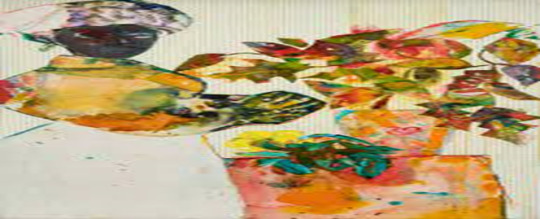
As a Christian believer, I honor God in daily basis in my life. I used clay to create this beautiful cross that represents my believes. The colors represent a lot from me: Purple=my favorite color, red, green, and white=Mexican flag. Red, blue, and white=American flag.

References:
Woman Ironing (Isis) (from Pictures of Garbage) by Vik Muniz on artnet Auctions
Woman Ironing - Wikipedia Frank, Patrick. Prebles’ ARTFORMS, Twelfth Edition. Pearson with REVEL.
1 note
·
View note
Text
Veridical perception definition

#VERIDICAL PERCEPTION DEFINITION REGISTRATION#
Illusions metaphysics objectivity philosophy of perception reality truth veridicality. Within such a worldview the notion of objective reality is valid, it comes in part within the range of our senses, and thus a definition of illusions as kinds of deviations from veridical perception becomes possible again. This ascribes real existence to many levels of dynamic systems of information, emerging progressively from the subatomic to the biological, psychological, social, and ecological. Sworn testimony in a courtroom is expected to be. In contrast, I point to a more recent and commonly used alternative, non-reductive metaphysics. Using the adjective veridical is a formal way to describe things that are accurate or based in reality. And they put forward an alternative interface theory, on which perception is an adaptively useful but truth-obscuring veil between perceiver and. Second, anti-realists assume their opponents hold a fully reductionist metaphysics, in which fundamental physics describes the only ground truth, thereby placing it beyond direct human sensory observation. Hoffman, Singh, and Prakash (henceforth, HSP) argue that perception was not selected for veridical representation, hence that, contrary to a very widespread consensus, there’s much less of the latter than you might expect in perception. Here, I first demonstrate how novelist George Orwell warned that such denials of objective reality are dangerous mistakes, in that they can lead to the suppression and even the atrophy of independent thought and critical evaluation. To pick up the thread of the argument, we can define a ‘properly functioning human perceptual system’ quasinormatively as a system that has. However, it has been claimed recently that this definition lacks validity, for example, on the grounds that external reality cannot possibly be represented truly by our sensory systems, and indeed may even be a fiction. According to Buddhist prama tenets, there are only two valid and authoritative means of veridical cognition. Viele wahrheitsgemässe Anteile der Menschheitsgeschichte existieren noch, wurden jedoch wegen dieser Endzeit verborgen und für die endgültige Freigabe geschützt.Illusions are commonly defined as departures of our percepts from the veridical representation of objective, common-sense reality. Veridical Perception in NDEs Jan Holden, EdD, LPC-S, LMFT, NCC: One of the most fascinating aspects of NDEs is 'veridical perception,' in which the near-death experiencer reports seeing or hearing events during their NDEs that, given the condition and/or position of their physical bodies, should have been impossible to perceive but are nevertheless corroborated as accurate. Many veridical accounts of human history still exist but have been hidden away and protected for final release during this end-time. Über die Funktionalität einer leichten Selbstüberschätzung. On the functionality of a veridical self-concept.
#VERIDICAL PERCEPTION DEFINITION REGISTRATION#
The information submitted through the registration form need to be complete and veridical.ĭie Angaben im Anmeldeformular müssen vollständig und wahrheitsgemäß erfolgen. Im Unterschied zu realistischen Gemälden sind Photographien nicht nur Symbole oder Äußerungen einer Beziehung zwischen den KünstlerInnen und ihren Gegenständen, sondern gelten vielmehr als wahrheitsgetreue Evidenz. In contrast to the realist painting, photographs are not just symbols or expressions of the relation between the artist and his subject, but are considered as veridical evidence. This is the first step in determining whether consciousness can survive bodily death. At this point in near-death studies, researchers are particularly interested in studying those NDEs that may provide an answer to the question of whether the mind can function outside the physical body. Große wahrheitsgetreue Wahrnehmung (Teil der außerkörperlichen Erfahrung)! Veridical Perception in Near-Death Experiences. From Latin vridicus : vrus, true see wr-o- in Indo-European roots + dcere, to say see deik- in Indo-European roots. Great veridical perception (out of body portion)! Coinciding with future events or apparently unknowable present realities: a veridical hallucination. Empirical data have been collected to ensure a veridical recommendation.įür eine wahrheitsgetreue Empfehlung wurden empirische Daten erhoben.

0 notes
Photo

blackjack card
Feeling lucky today! After all, you can play Blackjack World Tour, your considered 21 games - any place every time. online casino
Bet without going through cash and participate in unique encounters!
If you're a fan of club table games, you'll love our dull jack.
Today karma is your accomplice. Support decent systems and achieve success!
Transform yourself into an expert and reliable Blackjack 21 shooting player by betting like any other gambling club table game truly without facing any real money challenge!
Blackjack Features:
You can bet without going through cash. Best Blackjack 21!
Level up your skills in a certified blackjack (21) game, emotional shapes and betting encounters to test your strategy.
Scoring a wide degree of prize chips to mimic your affirmative Blackjack 21 Flood understanding!
This is the surest chance to pursue our blackjack!
Lay down your bets and put all the cards on the table and become a professional player in the club card game! Like the twenty one stand out. The standards are clear, the play is stimulating, and there are great open doors for high strategy. The truth can be said, that for a master player who can play an ideal game and count cards numerically, the chance to win is a piece of time in that player's underwriting.
In spite of that, a wisely fair game mandates partly, less club chances, making it one of the most fascinating club games for blackjack players. During World War II, the perceptual nature of blackjack dates, its foundations go back to the 1760s in France, when this is called Bing-ET-UN (for French 21). Today, blackjack is one game that can be found in each American club. As an amazing home game, it is played to a rather varied standard. In the gambling club structure, the house is the vendor (“a very impressive bank”). In gambling club play, vendors keep standing, players are organized. Traders are obliged to execute every bit of the game, from improving and managing their cards to handling all bets. In a home match, each player persuades a potential opportunity to become a trader (“Creating Bank”).
pack
A standard 52 card pack is used, but in many gambling clubs two or three card decks are patched together. 6 deck games (312 cards) are the best. In the same way, sellers will undoubtedly take advantage of plastic cards that are rarely made due to, yet turn to the lower part of the pack to show whenever there will be the most obvious opportunity to revamp the card. When something like 4 decks are used right, they are supervised in shoes (holders that allow the seller to face down the cards individually, without really holding something like a pack).
object in the game
Each piece tries to beat the seller by getting very little consideration 21 and, as you might expect, without going over 21.
Card Value/Scoring Casino Site Recommendation
It all depends on the individual player worth taking 1 or 11 subject matter experts. Face cards respect 10 and other cards respect pip.
bet
Before the arrangement begins, all players place their bets on chips in front of them in the allotted area. At least most outrageous end centers are set around gambling, quite far from $2 to $500.
Shuffle and Cut
The trader thoroughly changes the segments of the pack until all the cards are mixed and consolidated. The merchant cuts out and distributes one of the players, and the plastic development card is spread for purposes that the last 60-75 cards or so are not utilized. (If you don't align the lower part of the generally speaking huge number of cards in some way, it will make it much more difficult for an experienced card counter to work properly.)
transaction
When exactly all players have placed their bets, the dealer surrenders one card face to each player in a clockwise direction, and a short time frame later one card face depends on him. One more round of cards, except for the next trader, oversees all players face up, requiring the next card face down. After that, all players adjacent to the vendor have their two cards face up and the dealer has one card face up and one card face down. (In a clear game played with only one deck, the player's cards can be managed face down and grab them. Today, nonetheless, basically all blackjack games are where the player's cards are which player is on which card. Integrate face-to-face management based on the default of being unable to contact.)
the circumferences
If the player has an aces and "ten cards" (image cards or 10), giving the idea of 21 every two cards, this is a brand name or "blackjack." Which player has a brand name and the sender does not In this case, the dealer quickly pays 1.5 times the amount wagered on the two hidden cards. If the seller has a brand name, they quickly collect bets from all players who have no natives (no additional sums yet). If both the merchant and one or more players have natives, that player's bet is suspended (tie) and the player regains his or her chips.
If a vendor's face-up card is a 10 card or an ace, they take a gander on their face-down card to see whether both cards check a star. On an off chance that the face up card is undoubtedly not a 10 card or an ace, they don't take gander on a face down card until it becomes the shipper's chance.
play
The player to the side must first go and choose whether to “stand” (not asking for another card) or “hit” (to ask another card to try to draw close to the number of 21, or hit absolutely 21). So players can initially arrange a few ways on two cards or ask the dealer for additional cards individually (if under 21) or "bust" (if over 21). In the case of a final decision, the player loses and the vendor collects the bet. The dealer then, at that point, goes to the side and goes with the players and further serves them.
Mixing an ace with anything other than 10 cards is known as a "delicate hand" because the player can draw or draw cards thinking the ace is either 1 or 11. For example "delicate 17" (professional and 6), immovable is 7 or 17. A hand with a count of 17 is a big hand, but the player may draw for a higher count. If the draw busts the aces as 11, the player essentially counts the aces as 1 and either stands or "blows" (requesting additional cards from the vendor individually) to continue playing.
dealer's play
When the trader has served each player exactly when, the trader face down card is turned on. On the off chance that full scale is somewhere near 17, it should stand. All households under 16, they must receive a card. Vendors should continue taking cards until something like 17, along this line, says that every stand the vendor considers to be. In case the sender is a skilled professional, and it considers it 11 will pass in and out somewhere near 17(but more than 21), the trader must contemplate the master 11 stands. The shipper's choice, then, at that point, is redone on every play, while the player has the choice of taking near one card somewhere stable.
welcome intention
When it's the right player's turn, they can say "hit" or they can flag a card on a card by swiping a finger or two on the table to advance towards themselves, or they can agree with someone a hand on a very good improvement. You can shake "Come!" if the player chooses to stand, they can say "standing" or "no more", or they can hail this estimate by moving their hands sideways, palms down, and directly over the table.
pair separation
If a player's base two cards are of similar divisions, for example, two jacks or two weaves, they can look at them with two separate hands and decide when their turn comes around. The range of basic bets then goes on one of the cards, and a similar gun must be placed as a bet on the other card. Players play their left hand first by standing or striking fundamentally in various events; the right hand is really around then playing. Both hands are subsequently dealt with blatantly, and the dealer settles each to their own advantage. With a couple of aces, the player is dealt one card for each aces and cannot draw more. Also, if 10 cards are sorted any way to one of these aces, the result is equal to the bet (not 1 and 1/2 one, similarly corresponding to similar later blackjack).
expand down casino
Another option open to players is expanding their bets when the basic two cards manage a strict 9,10 or 11. Precisely when a player's turn comes, they place a bet equal to the highest bet, and the trader offers the player only one card, which is face down and does not turn on until the bet is finalized. With two fives, the player can only have a few areas, doubles down, or plays hands in the standard way by default. Dealers cannot choose to quarantine or copy.
security
0 notes
Photo

-Hélène Cixous, Poetry in Painting: Writings on Contemporary Art and Aesthetics-
Say it. Speak, deep, speech, rise, unseat my diorama. Buried, but to see the light. Ricochet your call straight through my heart – for love. I’ll deify my answer...
#writing#quote#women writers#love#art#perception#meaning#all eternal things#love in a time of...#somewhere warm#feel you on the inside#part perceptual fascination#part sanctity of art#understanding beyond thought#intelligence quotients#depth perception#past lives#this is who we are#probably should've been a poem#intertextuality of sorts#elisa english#elisaenglish
2 notes
·
View notes
Photo
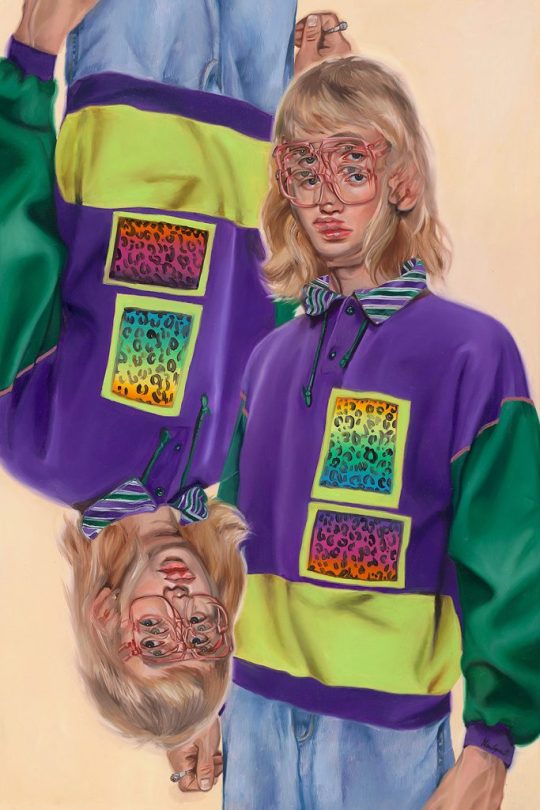





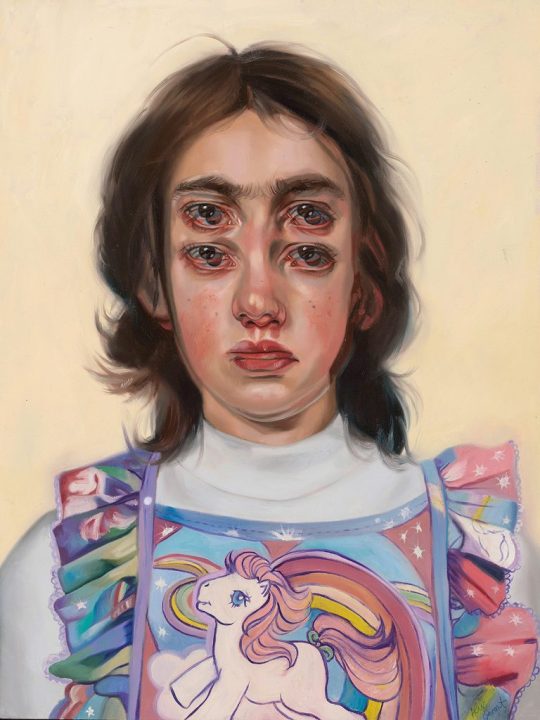
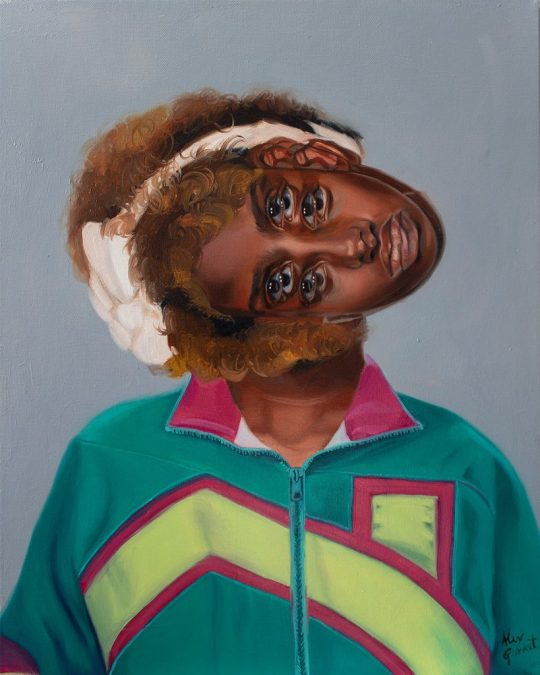
Alex Garant’s “Deconstructing Identities” at LMOAH.
Currently virtually on view at Lancaster Museum of Art and presented by Thinkspace Projects as part of their curated exhibitions, “The New Vanguard III,” is artist Alex Garant’s exhilarating new body of work, “Deconstructing Identities.”
Not unlike the fugitive flicker of a screen or the spectral layering of multiple film exposures, her portraits reveal an unsettling multiplicity, shifting beneath the subject's surface. Garant creates faces that challenge the optics of identity and the reductive way in which it is perceived, with a visual gimmick that quite literally dislodges and displaces its coherence to produce skittering psychological images of fracture and ricochet.
Garant has long been fascinated by the interaction of patterns and symmetry, and the resulting optics of their graphic repetition and layering. Her portraits begin with a series of superimposed drawings based on her sitters, actual individuals, and muses from her life, and pushes the familiar confines of portraiture to a newly strange and re-sensitized place of sensory confusion. Her subjects and their energy seem to erupt from within, testing the tensile seams of the skin, the body, as always, an insufficient vessel for the incongruous experience within.
The artist's labor-intensive oil paintings are meticulously executed, often incorporating patterning or other graphic elements and motifs to produce reverberating visual effects. Her color palette ranges from the subtlety of realistic flesh tones to hyper-colored gradients, saturated pastels, and translucent gem-like washes of color. Her stylizations of these vertiginous portraits thrive in surreal kitsch to interrupt the apprehension of the subject, activating a process of invested viewing, that is of trying to "see" the person amidst the trappings of hallucinatory visual interference. The compelling and somewhat unsuccessful process of attempting to stabilize the image produces a fundamental feeling of perceptual instability, one that intensifies our stolen communion with an evasive subject.
-
Be sure to follow Supersonic Art on Instagram!
361 notes
·
View notes
Note
hii! i make a lot of edits and they do turn out okay?! but the thing is its quality.. it really decreases and I always am fascinated by yoour edits which are AMAYZING AND THE QUALITY IS GOOD TOO!! so could you give some tips to increase quality or apps that doesnt decrease the quality of org vid when making edits?
oh thank you :D
i think you're talking about the gifs right?
here's my tips lol (it's just how i do things honestly)
1. get the highest quality file available
when using an mv, download the highest quality version (i use 4k downloader, you can get it for free). if using a stage, try to get a raw .TS file (they can be hard to find 💔) or if the youtube video is 4k and you can tell it's really good quality then you can use that
2. use a pre processing software like vaporsynth or avisyth
this type of software will clip the parts of the video that you want to gif, and it has some sharpening features that are also very helpful. i can link some giffing tutorials i've used that taught me a lot!
I use vaporsynth (tutorial)
3. make your gifs on photoshop
photoshop has additional sharpening filters that can be useful, along with many other editing features.
4. exporting on photoshop:
file > export > save for web (legacy)

I marked down all the important things:
➤ first on the upper right where it says adaptive:
there are 3 options you can use, perceptual, selective or adaptive. they all work well for gifs but some will end up in a higher size file than other. i've been into adaptive later. you can just switch it up and see what you like best.
➤ then where it says pattern:
there are 2 options you can use, pattern or diffusion. it's a matter of preference here, i like to go with pattern. both work fine. diffusion might make the file heavier.
➤ for the next part it says diffusion transparency dither, here you should use either that or pattern transparency dither.
➤ next is about the dimensions, for this part you should actually define it when you first start the giffing, in the clipping phase, using vaporsynth. just make sure you're using dimensions that are compatible with tumblr's format, for width either 540px (1 gif per row), 268 px (2 gifs per row) or 177 px (3 gifs per row). As for height normally you'd start with at least 350 px but that can vary a lot. Like in this extreme case from my screenshot where my height was 640px. Keeping in mind that the bigger the dimensions, the bigger your gif size will be and the lower number of frames you'll be able to have.
➤ which is the next point, size. as we know, tumblr has an image size upload limit of 10mb (honestly if my images are over 9.5 it already doesn't let me upload). ideally you want to keep your gif small as tumblr might tone down the quality a little bit with the upload.
For the rest of the options on the export screen I believe you typically don't need to mess with, so just make sure they look the same as mine :D
All of the above are standard procedure for me and imo usually indispensable for a decent looking gif.
5. editing
i don't know if by quality you also meant some aspects of my gifs that imo are due to my editing (such as how they're usually clear and bright). if you wanna know more about that, let me know in another ask! but generally i'd advise you to do a test drive with your gifs when it comes to filters. for example add a filter and try to export to see what the final result will actually look like, in comparison to a version of the gif that wouldn't have it. I say this because, for example adding noise to your gif could potentially make it look like it's in lower quality compared to not using it.
I'm sorry if you already knew everything I mentioned and it wasn't helpful😖
But feel free to send more asks if you wanna get down to more specifics or if you wanna know more about my own process :D
4 notes
·
View notes
Text
Linguistics Jobs: Interview with a Developer Advocate
I often talk about how Linguist Twitter is a great place to hang out. Twitter can be a big, confusing, noisy platform, but I’ve enjoyed building a little world full of linguists, and one of those excellent people is Rachael Tatman. It has been great to follow Rachael as she completed her PhD, got a job in data visualisation with Kaggle, and then moved on to chatbot maker Rasa. Rachael is not only a great linguist, but a thoughtful linguistics communicator. Her blog Making Noise and Hearing Things has a wonderful back catalogue covering data science, professionalism and emoji. You too can follow Rachael on Twitter (@rctatman).

What did you study at university?
My BA is in Linguistics and English Literature (I double majored) from William and Mary (in Virginia, USA) and then I went to the University of Washington for grad school. I got my PhD in linguistics in 2017, and my dissertation was "Modeling the Perceptual Learning of Novel Dialect Features". Over the course of my PhD in particular I moved more and more into natural language processing, although I was still pretty much calling myself a computational linguist.
What is your job?
I'm a senior developer advocate for a company called Rasa. We make an open source framework for building chatbots/virtual assistants and free software for improving your assistant over time. (If you're a business using the free software and want additional fancy features, we also have a paid enterprise version.) Developer advocates are basically peer-to-peer technical educators. Our job is to help make it as easy as possible for developers to use whatever product it is that we support. So my day to day involves a lot of developer education–things like writing blog posts, giving talks and making videos–as well as providing technical support and product feedback. Because I have a research background and Rasa has a research team I'll sometimes help out with research projects as well.
How does your linguistics training help you in your job?
It helps me every day! One great example is that it's given me a good idea of the typological diversity of languages in the world. Since Rasa is a language-agnostic platform (we want to be able to support as many languages as possible) knowing what sort of differences there are between languages is very helpful. My linguistics training also taught me how to communicate complex topics succinctly and accurately which is a huge part of developer relations and related fields, like technical writing.
Do you have any advice do you wish someone had given to you about linguistics/careers/university?
Be really kind to yourself, especially when you're on the job market. There's a large emotional regulation component to searching for jobs that I don't think gets talked about enough. Find something that helps you disconnect from thinking about work or looking for work and commit to doing it often. That could be something as simple as following along with yoga videos in your room or setting up a weekly time to play video games with your friends or just taking a walk outside every day, maybe with your children if you have them. Building a brain break into my routine and keeping it stable really, really helped me both in graduate school and when I was on the job market.
Also: your goals and identity will change over time. You may think of yourself as an academic now but won't in 5 years. That's ok. It's normal. And it's also normal for those shifts to come with a grieving process, especially if you weren't expecting them. Give yourself grace, and time, to feel your feelings. And know that you can have a rich, happy fulfilling life that looks nothing like what you're planning for yourself right now.
Any other thoughts or comments?
The great thing about studying and having a fascination for language is that it's everywhere. Your linguistic training will give you a set of lenses you can look through for the rest of your life, and that's a thing to celebrate and cherish in its own right.
Related interviews:
Interview with a Product Manager
Interview with a Senior Content Project Manager at Transparent Language
Interview with a Linguistic Project Manager at a Language Tech Company
Recent interviews:
Interview with an ESL teacher, coach and podcaster
Interview with a Juris Doctor (Master of Laws) student
Interview with the Director of Education and Professional Practice at the American Anthropological Association
Interview with a Research Coordinator, Speech Pathologist
Interview with a Dance Instructor and Stay-at-Home Mom
Check out the full Linguist Jobs Interview List and the Linguist Jobs tag for even more interviews
114 notes
·
View notes